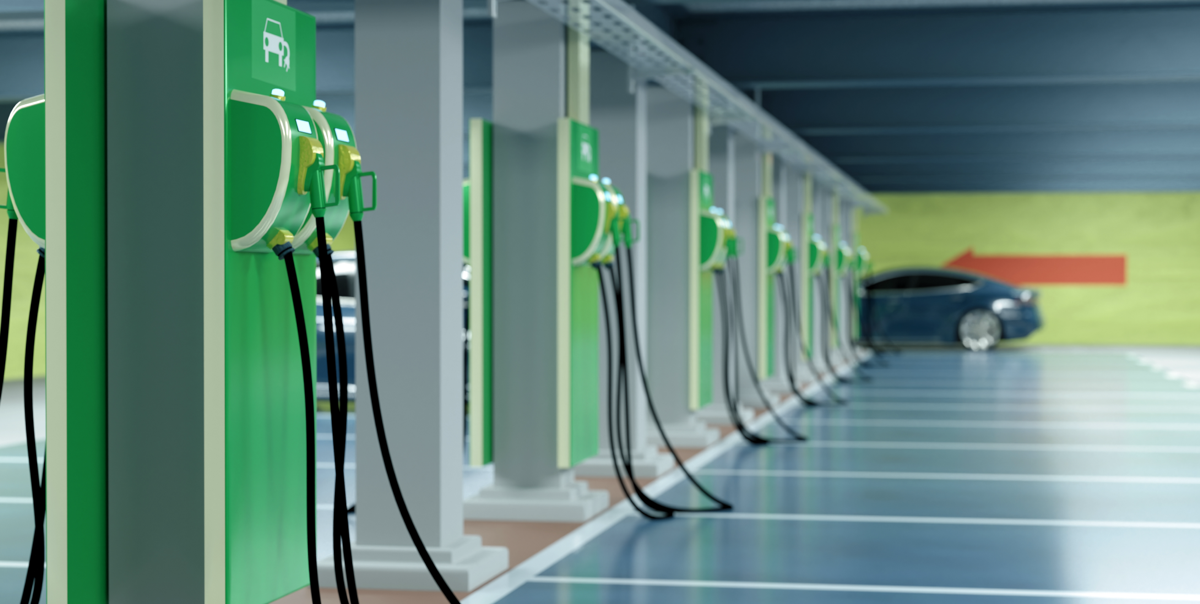August 2, 2022
How Can Multifamily Owners Offset the Cost of EV Charger Installation in Their Properties?

4 Min. Read
Electric vehicle (EV) ownership is surging along with the need for fast and convenient EV charging solutions. Since most EV drivers prefer to charge their cars at home and many live in multifamily buildings, it may be time to consider EV charger installation at the properties you own or manage.
Installing EV charging in your properties brings several advantages, from meeting the growing demand for charging and earning additional LEED points to making your properties more appealing. EV charging stations can enhance the value of your property and help you attract and retain residents that drive EVs or may buy one.
Onsite EV chargers make residents’ lives easier and relieve range anxiety. In high adoption states, EV chargers are becoming an expected amenity in all multifamily properties.
Despite these benefits, high initial installation costs can be an obstacle. Thankfully, incentives are available to help cover the costs of multifamily EV charger installation. Read on for more details about financial relief for your installation project.
EV chargers 101
Before beginning your installation project, you need to know the basics of charging equipment and the best fit for your buildings and residents. Chargers are rated Level 1, 2, or 3 and have different costs, installation requirements, and charging speeds.
Level 1 chargers can be plugged into a standard 120-volt power outlet but are very slow, adding only about 40 miles of range over an eight-hour charging period. At the other end of the scale, Level 3 chargers can charge a battery in as little as 30 minutes, but equipment and installation can cost up to $50,000 for a single charger.
Most incentives require the installation of Level 2 charging stations, and they are the preferred choice for most drivers and multifamily property owners and managers. Level 2 Charging Stations can charge an EV in about eight hours, the perfect amount of time for residents to charge their EV at home overnight.
EV charger installation incentives
States, utility companies, and other sources offer incentive programs that defray your multifamily EV charger installation cost. Typical programs include state grants, tax credits, and utility company rebates. Some states even offer carbon credit revenue for charging infrastructure. Take advantage of every incentive you can as part of your multifamily charger installation strategy.
With a bit of research and careful planning, the chances are excellent that you will find ways to offset the cost of your installation project. The incentives search tool on the U.S. Department of Energy website is a great place to start.
Listed below are some of the types of incentives available. While these examples apply only to specific locations, most states offer similar programs.
Electric utility incentives
Electric utility companies are among the best resources for multifamily charger incentives. Programs include rebates and discounts on equipment and installation. Here are a few examples:
- Through its Multi-Unit Smart Charging Program, El Paso Electric offers rebates for multifamily Level 2 Charging Stations. Multifamily properties can earn a rebate of up to 75% on installation costs.
- Utility provider APS in Arizona is offering the Take Charge AZ Pilot. It provides free charging stations and free installation for some multifamily applicants.
Who is supplying electricity to your building? It pays to check with your utility to see if it has a similar program.
Grants from states and government agencies
Many states and government agencies are offering grants to support new EV chargers in multifamily properties.
- For instance, the Antelope Valley Air Quality Management District in California will cover 50% to 70% of the installation cost of EV chargers in multifamily buildings through its Electric Vehicle Charging Station Program.
- The New Mexico Environmental Department’s EV Charging Station Funding project will cover up to 100% of a multifamily charger installation project, including equipment cost, installation, and maintenance.
Your state, air quality control district, or other local agency could have similar programs to help fund your charger installation.
State tax credits
Some states also offer direct tax credits to help offset multifamily charger installation costs. For instance, the State of New Mexico provides the EV Charging Station Make-Ready Building tax credit of up to $3,000 for building out the infrastructure needed for EV chargers in multifamily buildings.
Federal aid
Unfortunately, the federal government does not offer direct aid programs to support multifamily owners and managers installing EV charging stations. However, the current administration has been very supportive of electrification, so stay tuned.
In the meantime, educating your residents that they may qualify for a $7,500 federal tax credit when purchasing an EV may help increase interest in EVs and onsite charging. If your residents know that tax credits are available, they may be even more interested in onsite EV charging.
It’s a win-win
Everyone wins when you take advantage of available incentives to offer EV charging in your properties. You get happier and more loyal residents while enhancing your property value and keeping costs to a minimum. Your residents realize the advantages of home EV charging and can skip the hassles of public charging stations. Qmerit can help you find programs and incentives in your area.
Qmerit can help
Multifamily EV charging stations are an excellent opportunity to increase your properties’ revenues and marketability. But you can clarify uncertainties in the process by engaging in a careful planning process with a company that shows a track record of success with EV charging implementation.
Qmerit is that company. We are the leading installer of EV charging stations in homes and multifamily properties in the U.S. You can rely on Qmerit’s extensive track record and experience to guide you from start to finish. Contact us to guide your multifamily project to success.
